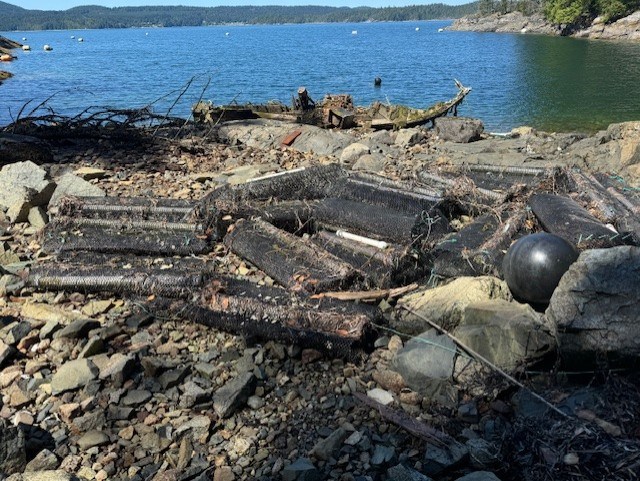A recent multi-day kayak trip up our coast brought to my attention something that I was quite unaware of. As my wife and I pulled into a cove in search of fresh water (our mapping app indicated a small creek), we came upon an oyster farm, clearly abandoned.
Strewn about on the land and on or below the water was what I estimated to be approximately eight tonnes of predominantly, plastic waste (buoys, cages, rafts, ropes, polystyrene floats, nets, etc.).
I distinctly remember, maybe three or four decades ago, the surge in interest in aquaculture along the B.C. coast. I even harboured notions myself of operating a small oyster or mussel farm in some idyllic location on our beautiful coast.
Upon our return to Squamish, I fired off an email including pictures and geographic coordinates to the relevant department at Fisheries and Oceans Canada (DFO) explaining what we saw. Two days later and much to my surprise, I received a call back from a DFO official. The official, clearly frustrated was already aware of the farm we had come upon. He had tracked down the owner of the abandoned lease, who was now financially unstable, unable to undertake the clean up and most likely not even able to pay a fine.
A little revealed the extent of the problem. Though the exact number of abandoned oyster leases on our coast was unknown, it could be as many as 100.
Both the Province of BC and DFO issue the required licenses and permits (a complicated bureaucratic process) but follow-up is clearly a problem.
The recent clean-up of a single, larger, abandoned farm cost approx. $100,000, all taxpayer-funded, as part of the federal government’s Ghost Gear Program (annual budget in 2021-22 of $10 million). The farms require constant maintenance and attention, but typically the smaller leaseholders leave their farms unattended in the harsh winter months, only to return to their degraded lease in the spring. This and other factors can lead to the abandonment. Regrettably and as far as I could find out, no provision exists to ensure the lease holder has the resources required for the eventual removal of all associated infrastructure.
Well-established protocols exist in the mining sector for post-operation site remediation. Clearly, similar mechanisms should be in place for aquaculture leases.
I guess the lesson learned is that poor regulation, jurisdictional disputes, lack of enforcement/monitoring, shaky business acumen and a uniformed public can lead to unintended and, in my opinion, serious environmental consequences.
We all have to pay more attention or better still, contact the 24/7 Observe, Record and Report (ORR) hotline at 1-800-465-4336 or via email at [email protected].
Jim Harvey
Squamish


.png;w=120;h=114;mode=crop)

